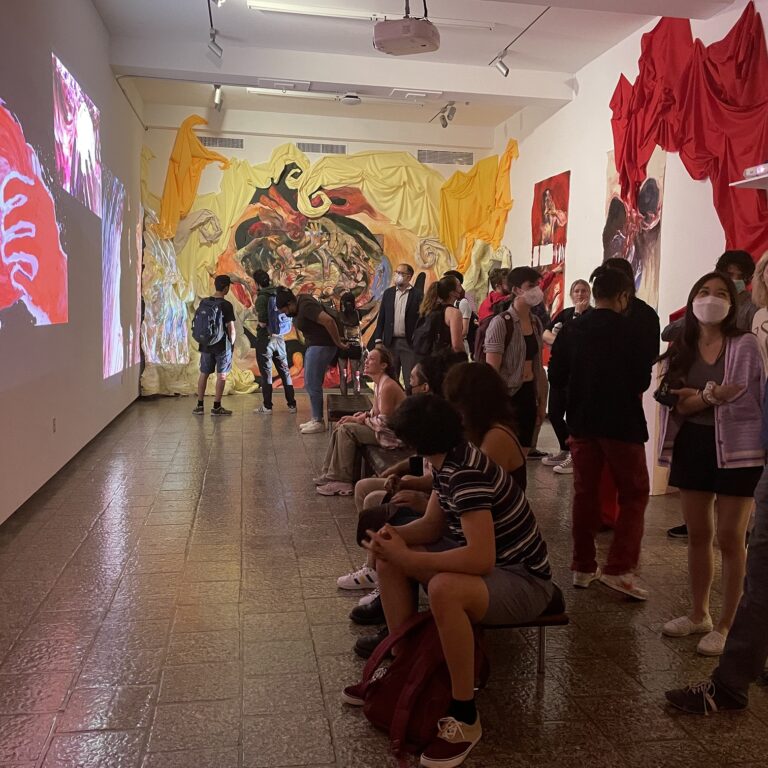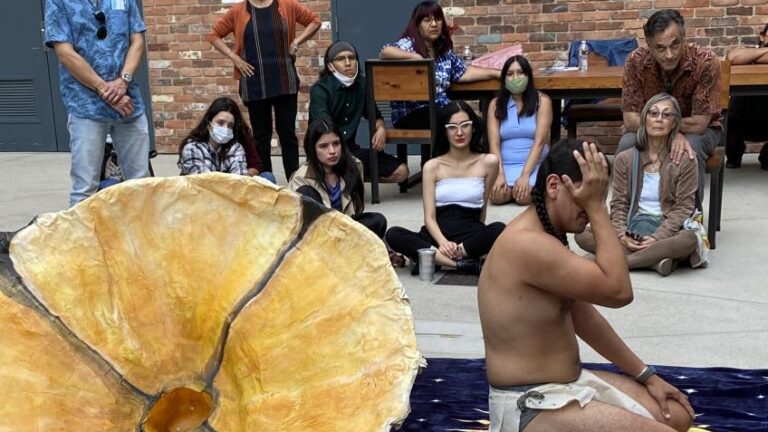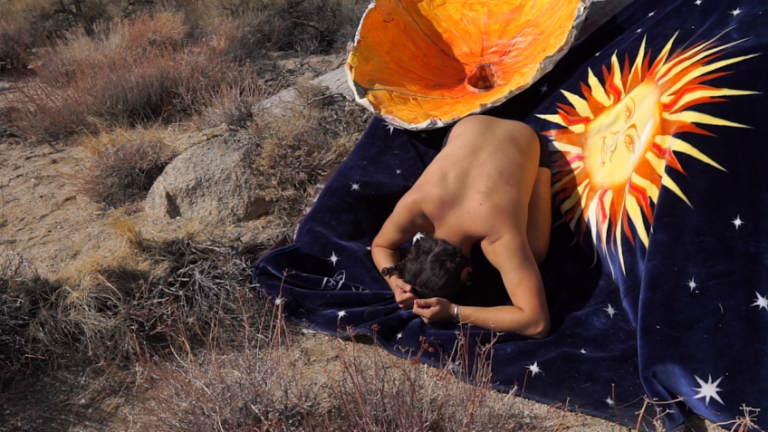José Guadalupe Sánchez III: Para Acompañar
MFA Thesis Exhibition
On view June 18 – 26, 2021
COVID safety restrictions rigorously apply
Roski Mateo Gallery
LOCATION
1262 Palmetto Street (Los Angeles Arts District)
Los Angeles, CA 90013
HOURS
Wednesday – Friday, 12noon – 6pm
Sign in at door upon arrival for admittance. Los Angeles County limits the space to 4 visitors at a time
VISITING THE EXHIBITION
Visitors must complete an online wellness assessment (TROJAN CHECK) PRIOR to visit and comply with all USC regulations during their visit. Those include:
- TROJAN CHECK requirements include the completion of an online health assessment. Please be sure PRIOR to arriving on campus. Click here to complete
- Visitors are limited to 4 visitors in the gallery at a time.
- Social distancing must be observed at all times.
- Mandatory mask must be worn over the nose and mouth at all times. No neck gaiters, open-chin triangle bandanas, or face coverings with valves, mesh, or holes. This is required for all visitors over age 2 and all staff and artist.
- Observe signage and markers throughout the gallery and Avoid Cross Flow of Traffic. Enter and exit through marked designated doors.
- Sanitize your hands when entering the space
- NO Food or Drink in the Gallery or any indoor space.
- Do NOT enter if you or any member of your party have experienced any of the following:
- Cough, shortness of breath, sore throat, runny or stuffy nose, difficult breathing or shortness of breath, body aches, headache, chills, fatigue, diarrhea, nausea, conjunctivitis, loss of smell and taste in the last 14 days.
- If you have been in contact with anyone who has COVID-19 or COVID-19 symptoms during the 14 days prior to your scheduled visit to Mateo, DO NOT VISIT.
- If you, yourself has had COVID-19 in the past 10 days.
- If you are currently directed by a healthcare provider or public health official to isolate or quarantine due to COVID-19 infection or exposure?
- Complete Trojan Check health screening prior to entering the building. Contactless Trojan Check will be used when entering the building.
- Vaccines are not required but highly recommended.
MFA ART COHORT EXHIBITION WEBSITE
Visit the 2021 MFA Art Cohort’s website for an introduction to the practices of all candidates here.
ARTIST’S STATEMENT
When my brothers and I were young, our mother would have us accompany each other wherever we went. This request was often placed on my older brothers as I am the youngest. When they resisted, as teens do, asking “why do I have to go?!” our mother would respond exclaiming “Para acompañar!”
In this context, loosely translated, para acompañar means: for the purpose of accompaniment. To accompany, in a world structured for individualism is a political and philosophical stance. This stance is where this exhibition finds its traction. Through paintings, installation, video, and performance Sanchez engages us directly in the gallery space to explore how we are accompanied by many things at every moment including spirits, objects, places, and values. The work questions the legitimacy of arbitrary distinctions such as life/death, alone/together, and past/present and explores how we may carry these ideas with us. Para Acompañar calls for a self-reflexive conversation between the artist and viewers, asking us to think together about how the lenses through which we experience the world accompany and influence our judgment of the world. Sanchez offers not a space of passive viewership but an invitation to participate, to be vulnerable, to give and receive.
Participate with an Offering:
“Note: If you are able to attend this thesis exhibition, please bring a small offering for the ancestors who will be in attendance. You may place those offerings at the base of any figure painting. Offerings may include but are not limited to flowers, soil, rocks, etc.”
ABOUT THE ARTIST
José Guadalupe Sánchez III is an interdisciplinary artist and educator. Relying heavily on self-reflexivity, his work is an investigation of the multilayered experiences of varying social realities in Los Angeles. This includes looking at the structural nature of oppositional value systems, intelligence, subjectivities, and how they become validated or not. A driving question in his practice asks, “how as artists can we make work that, on the one hand, validates the neglected experiences of the people we care about (i.e., through direct positive representation and intervention) and, on the other, be a critical reflection on those structures that created the conditions of making a people socially, politically, economically invisible?” His projects manifest as pedagogical interventions as an arts educator for marginalized youth, paintings, performance, video, documentary video, and his socially engaged art practice.



